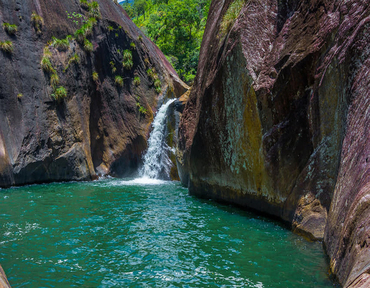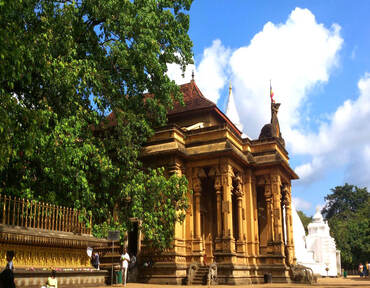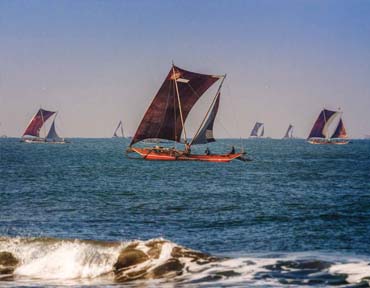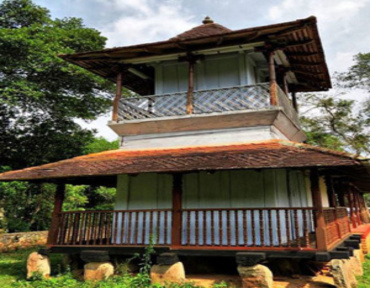


One of the most active and attractive waterfall in Sri Lanka is Pahanthuda Ella which has a continuous rich source of water. It is rather small waterfall compered with other waterfalls yet hence more water and a relatively a large pond of its own. The name was given due to the shape of waterfall and a way cascades, which looked like a lighten lamp where the small flame is what compered to the water flow due to the rural and hard accessibility and the literal forest reserve near by, the Ruhukanda forest, the accessibility is limited and unpopular with relatively large bio diversity supporting the eco - system. The waterfalls lays in the land of Handugalla.

The Kelaniya Raja Maha Vihara or Kelaniya Temple is a Buddhist temple in Kelaniya, Sri Lanka, seven miles from Colombo. Buddhists believe the temple to have been hallowed during the third and final visit of the Lord Buddha to Sri Lanka, eight years after gaining enlightenment. Its history would thus go back to before 500 BCE. The Mahawansa records that the original Stupa at Kelaniya enshrined a gem-studded throne on which the Buddha sat and preached. Kelaniya Raja Maha Vihara has become famous because of the beautiful paintings and sculpture by Solias Mendis depicting various events in the history of Sri Lanka

The fishermen who are based at the Negombo lagoon live rely mainly on their traditional knowledge of the seasons for their livelihood, using outrigger canoes carved out of tree trunks and nylon nets to bring in modest catches from September through April. Their boats are made in two forms – oruvas (a type of sailing canoe) and paruvas (a large, man-powered catamaran fitted with kurlon dividers). The men are regularly forced to head out to the ocean to fish, often losing money in the chartering process.

description not found